The Objects we image are visible from Wanaka at different times of the year. Some objects that are in the Southern part of the Sky near the South Celestial pole are not visible from the large areas of the Northern Hemisphere, other objects such as the Great Orion nebula are.
Galaxies such as our own Milkyway Galaxy are made up of billions (yes, that is right) stars. They of course emit their own light that we trap. These targets are extraordinarily long distances away, as in tens of millions of light years.
Pause for a moment, in NGC 300 below, we can see a vast number (something in excess of a billion) stars, we can also see a number of other faint galaxies in the background. These other galaxies also have vast numbers of stars in them. We now know from recent exoplanet hunting projects that planets form as a normal part of star formation, so it is reasonable to conclude that for the stars you can see there will be more planets around them that you can't ....
Other targets called nebula emit light from gas that is excited, Hydrogen emits reddish pink light, Oxygen blue and so on. So the glowing nebula targets you see here are emitting their own light, and mostly are in our galaxy.
Dark or reflection Nebula are areas of clouds not too dissimilar to smoke, basically enormous clouds of carboniferous dusty smoke that is then lit, or back lit by stars.
You will notice that a number of our images include galaxies, emission nebula and reflection nebula as well.
How we capture the photons is both simple and complex. Simple in the sense that putting a camera chip at the end of a telescope. Complex in the sense of these things that we have to overcome to produce an image.
Because the light has travelled so far it is naturally faint, just like any energy that radiates outward from a point source, the further from the point source the less intense or dense the photons are. To overcome this we need to point our telescope at precisely the same piece of sky for long periods (hours) to gather enough light to make the photo.
Given the accuracy required that is harder than it sounds, but also during that time the temperature will invariably change, usually it cools as the night progresses.
The problem with temperature is two fold, the warmer your CCD chip in the camera the more noise or "grain" in the photo. That's why we cool our camera chips to well below freezing, to reduce the noise and improve the SNR, or signal to noise ratio. Secondly metal, glass and other materials shrink or contract as you cool them, that changes the focus. These images need to be very accurately focussed so we are constantly refocussing.
The point is, it is a lot more difficult than just pointing a telescope and camera skyward to get these results.
Please enjoy.
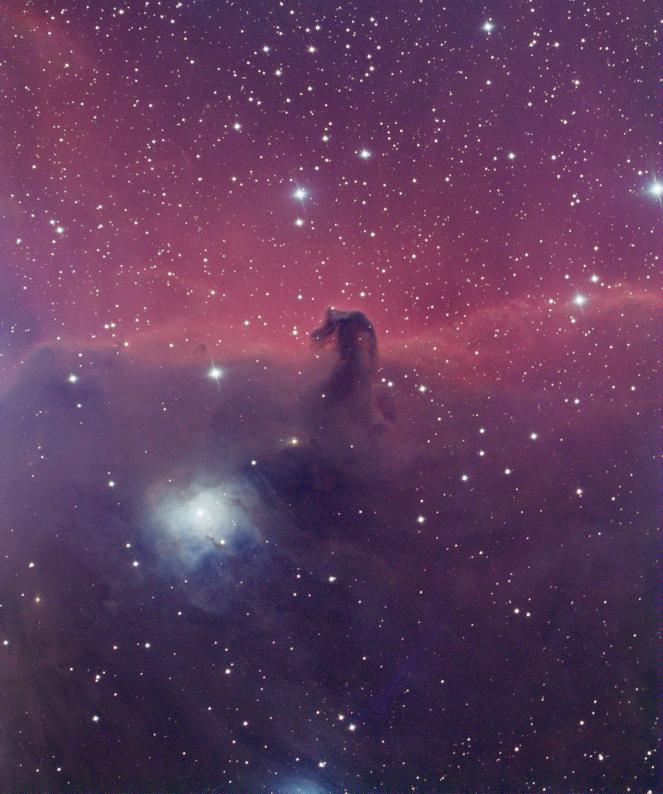
The Horse Head Nebula - B33 Order Ref Horsehead
This is a molecular cloud that lies approx. 1500 light years distant in the Constellation of Orion. It is visible from the Southern hemisphere during the Summer. First discovered in 1888.
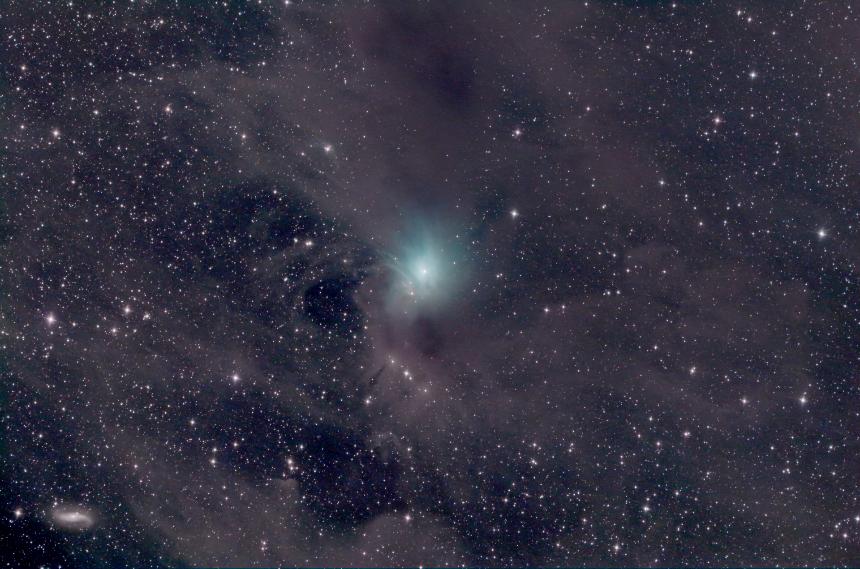
IC 2631 Order Ref IC 2631
This reflection nebula is in the Southern Constellation of Chamaeleon, it lies at a distant of approximately 500 light years
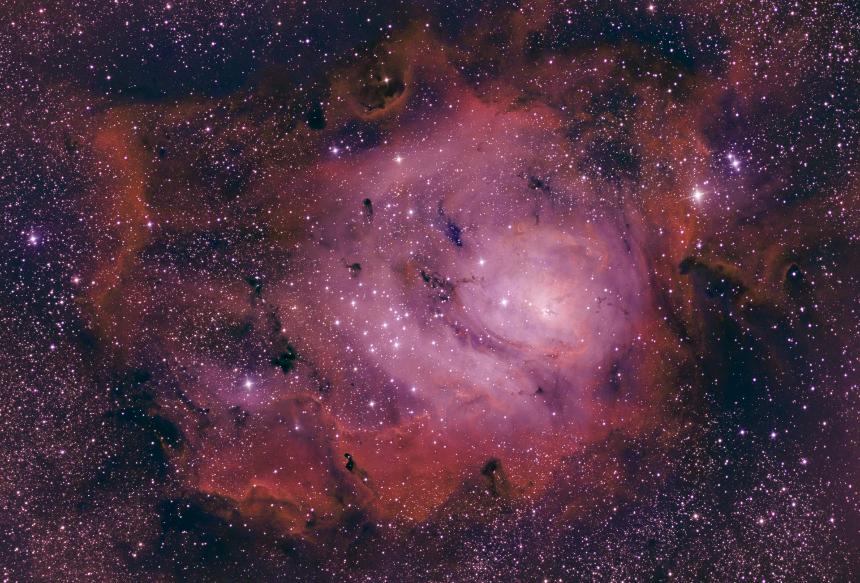
M8 Lagoon nebula Order ref M8
This giant interstellar cloud in the constellation of Sagittarius is an emission nebula lying approximately 4100 light years distant.

Markarian's Chain Order Ref Mark Chain
This chain of Gaxaxies lies in the constellation of Virgo, the centre of the cluster is approximately 70 million light years away from us.

Running Man Nebula M43 Order ref M43
This reflection nebula is part of the Orion constellation lying approximately 1500 light years distant.
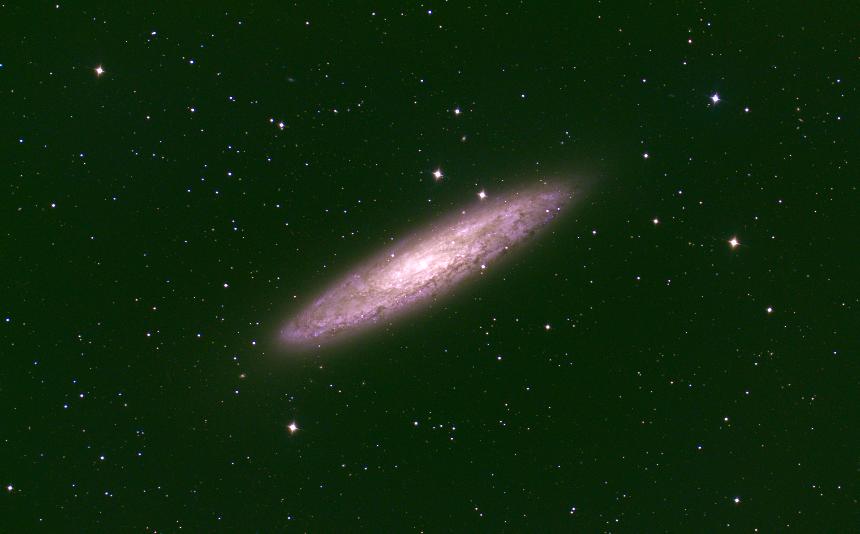
NGC 253 Silver Dollar Galaxy Order Ref NGC 253
This Spiral Galaxy lies in the Sculptor Constellation approximately 11.4 million light years distant.

NGC 300 Order ref NGC 300
This Southern Galaxy lies in the Sculptor Constellation at a distance of a little over 6 million light years. You can see many other faint galaxies in the background.
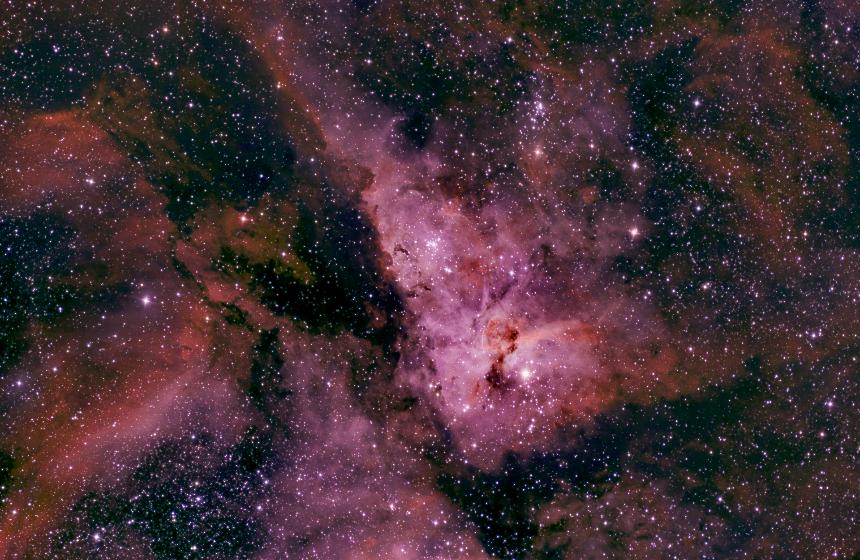
NGC 3372 Eta Carinae Nebula Order Ref NGC 3372
This bright nebula is in the Southern sky near the Southern Cross, it is easily seen under dark skies with the naked eye. This nebula lies between 6500 and 10,000 light years away. Eta Carinae, the bright yellowish star to the lower right of center has brightened and dimmed over the years and is expected to super nova at some point in the not too distant future, of course it may have already but we will only know approximately 7600 years after the event when the lightfinally arrives at Earth.
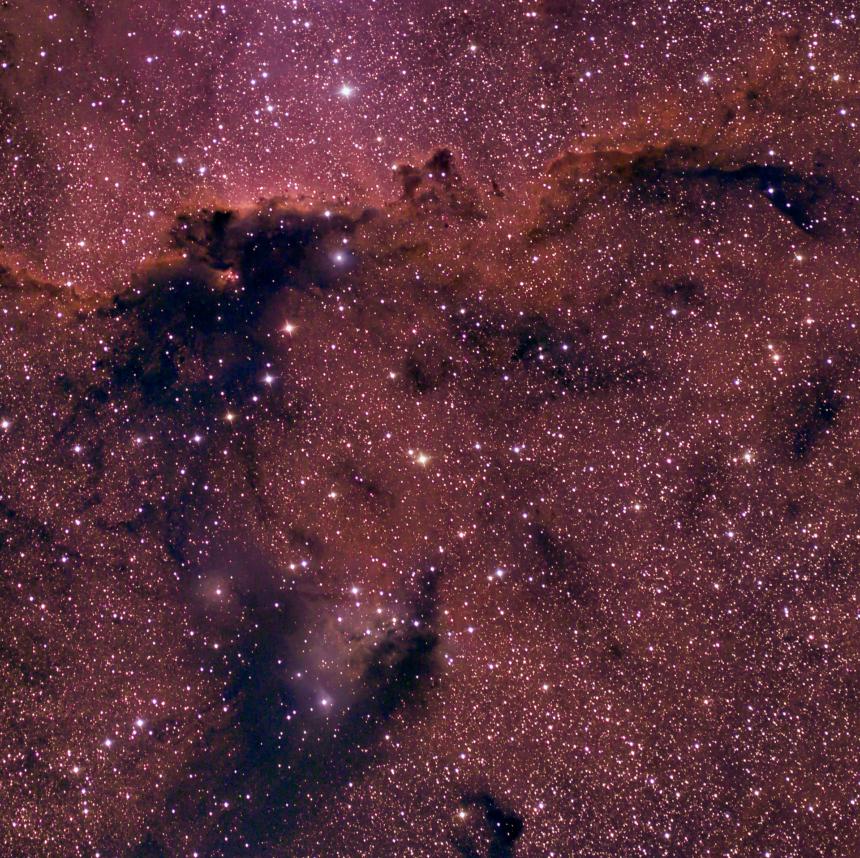
NGC 6188 Order ref NGC 6188
This nebula lies about 4000 light years away in the Constellation of Ara. The clouds of smoke like dust obscure the starlight that is emitted from behind it.

NGC 2793 Helix Nebula Order Ref Helix
This planetary nebula in the Constellation of Aquarius lies about 700 light years from earth. It is the result of the white central star shedding layers of gas. This nebula has been referred to as "the eye of God."

M20 Trifid Nebula Order Ref M20
This nebula is a combination of a reflection nebula, the blue portion, and an emission nebula, the red portion. It lies in the Constellation of Sagittarius approximately 5200 Light years away from us.

Comet Johnson 2015V2 Order Ref Comet 2015V2
This comet was photographed from Wanaka in June 2017 on its way back out to the vastness of space. You will note some faint galaxies in the background.
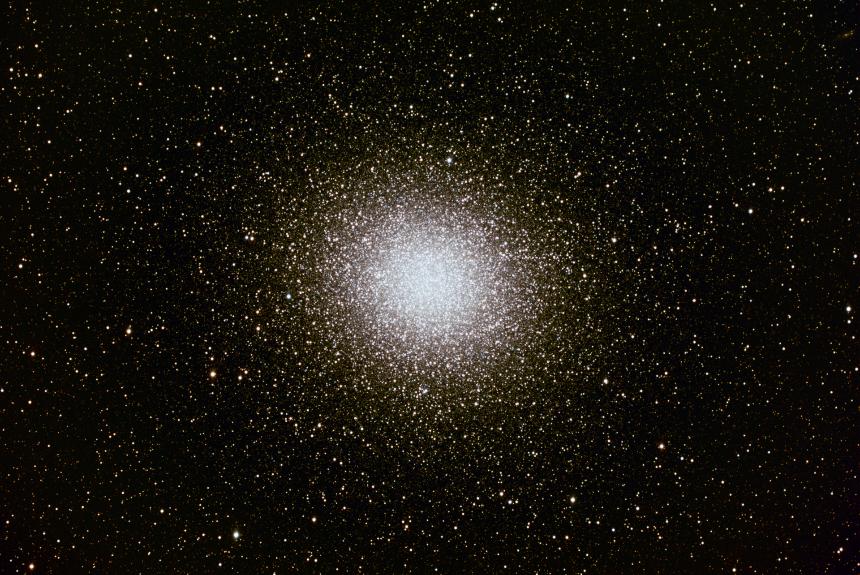
NGC 5139 Omega Centauri Globular Cluster Order Ref NGC 5139
This large Globular Cluster lies very close to the head of the Southern Cross and is easily visible to the naked eye. It is approximately 15,800 light years away and 150 light years across. It is the largest Globular Cluster in our Galaxy.
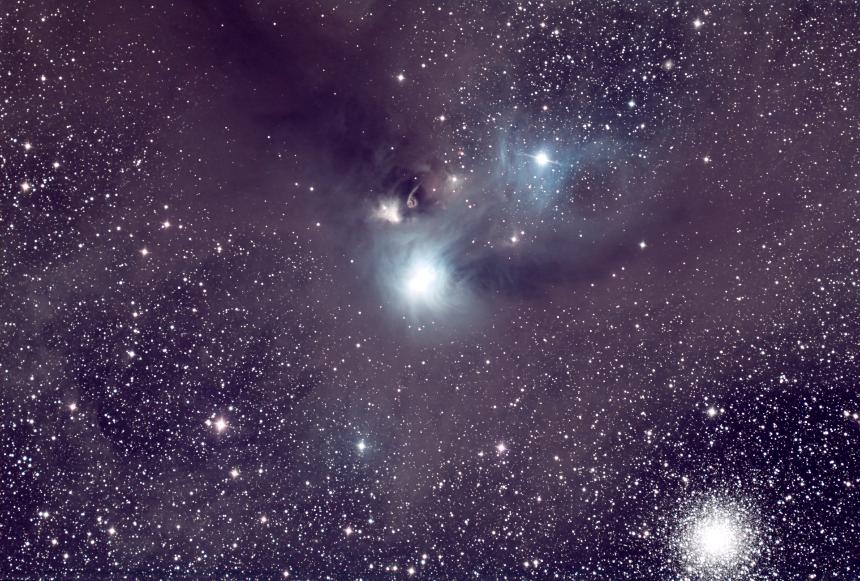
NGC 6726 Order Ref NGC 6726
This reflection nebula in the Southern Sky Constellation of Corona Australis lies between 400 and 500 light years distant. It is a complex molecular cloud that is reflecting light from background stars. The Globular cluster NGC 6723 can be seen in the bottom right corner.

M42 The Great Orion Nebula Order Ref M42
This bright nebula lies about 1500 light years distant in the Orion Constellation. From the Southern Hemisphere it is the area around the middle star in the handle of the pot. The very bright core is a star forming area.
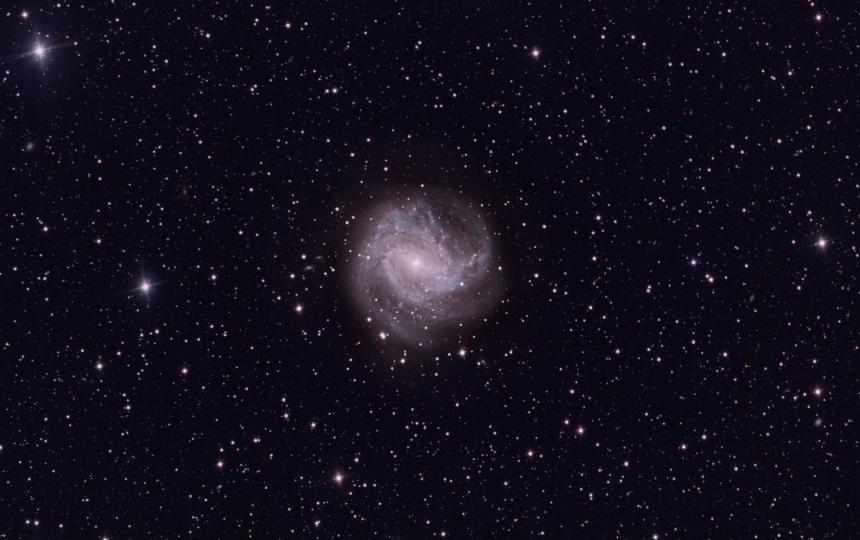
M 83 The Southern Pinwheel Galaxy Order Ref M83
This barred spiral Galaxy lies near the Southern Cross in the Constellation of Hydra. At a distance of approximately 15 million light years it is one of the closest and brightest barred spiral galaxies to us. You can see the knots of nebulosity in the arms, as well as some other faint galaxies in the background.

Grus Quartet Order Ref NGC 7582
The Grus Quartet of Galaxies lie in the constellation of Grus, rather unsurprisingly. What is interesting in this image is that these four Galaxies are at approximately 70 million light years distant. The other very faint Galaxies that are visible in the background are hundreds of millions of light years away.
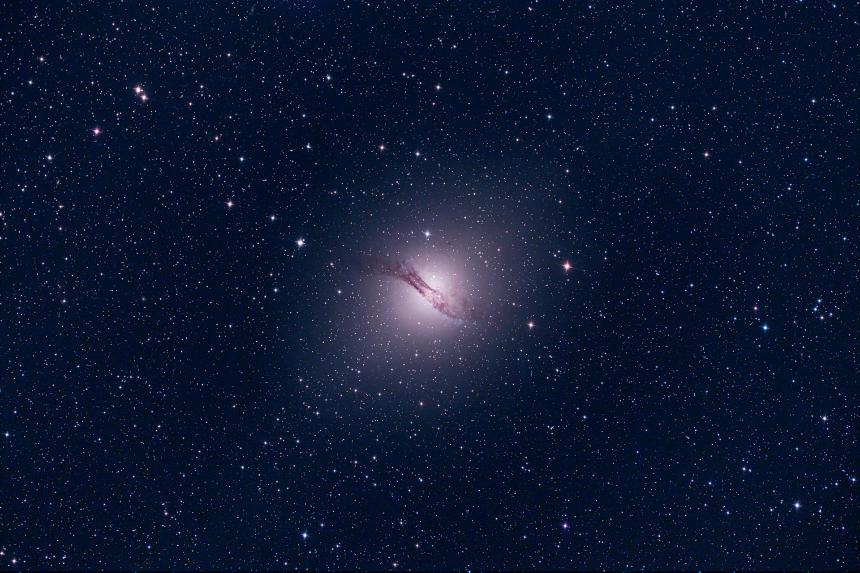
Centaurus A Galaxy Order Ref NGC 5128
This Galaxy is viewed edge on from our perspective and lies near the head of the Southern Cross. At its heart about 16 million light years from us is a Black Hole of approximately 55 solar masses, yes that is a rather awkward amount if you are trying to shift it ....

The Great barred spiral Galaxy Order ref NGC 1365
This Galaxy lies in the Constellation of Fornax and is approximately 56 million light years away.